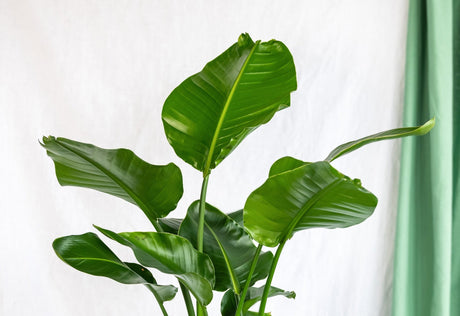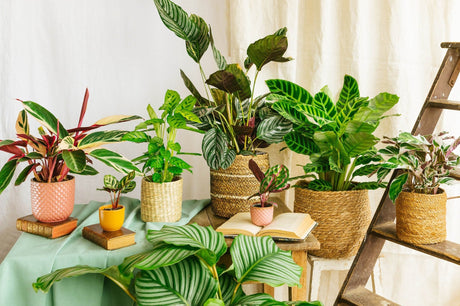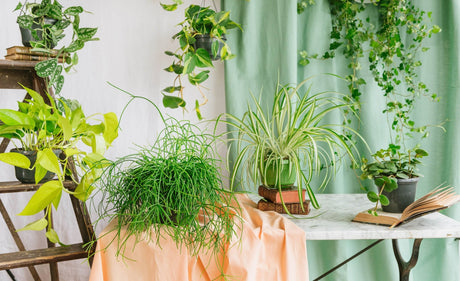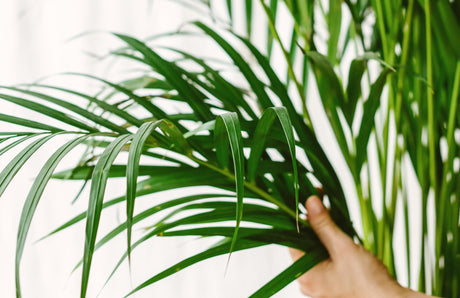The Tradescantia is distinguished by its leaves triangular or in the shape of spear, often marbled or two-tone, which add a touch of variety and sparkle to your decor. Colors range from bright green to deep purple, offering a wide range of aesthetic options.
1. Watering the Tradescantia
The Tradescantia, although tolerant, requires special attention particular with regard to watering. As a plant native of regions tropics, it prefers a soil slightly humid, but it is crucial not to not leave soggy. Too much water can lead to problems such as rot of roots, while too little water can cause wilting and leaves yellowing.During the active growth period (spring and summer), water your Tradescantia about once a week. Make sure that the water reaches all of the parts of the pot and allows for adequate drainage.
2. Watering techniques
Watering from below
A recommended technique for watering the Tradescantia is to pour water into the saucer under the pot. This allows the roots of the plant to draw the water they need by capillarity. Be careful not to let the plant soak in standing water for long periods of time to avoid root rot.
Top watering
Top watering involves watering directly to the ground above the plant. Be sure not to over-wet the leaves to avoid fungal issues. Let the water drain into the ground until you see water flowing out of the drainage holes.
Water moderately
The key to successful Tradescantia watering is moderation. Avoid excessive watering which could lead to root rot. Allow the soil to dry out slightly between waterings to avoid constant moisture.
3. The Tradescantia exhibition
Tradescantia thriving in bright indirect light. Place the plant near a window with filtered lighting, but avoid exposure direct rays of the sun, which can scorch sensitive leaves.Exposure to the sun in the morning or evening is particularly beneficial. However, avoid light that is too bright during the hottesthours of the day, as this may damage the leaves.
4. When should I repot my Tradescantia?
The Tradescantia tends to thrive when it is slightly cramped in its jar. It is generally recommended to repot every 1 to 2 years, ideally in spring or early summer. This period corresponds to the period of growth active of the plant, which facilitates its adaptation to its new environment.Repotting may be necessary if you observe any of the following signs: - Roots are growing out of the bottom of the jar.
- The plant appears to be stagnant in growth or becoming crowded in its current pot.
- Water flows quickly through the pot when watering, indicating that the soil is compacted.
5. What fertilizer should I use for my Tradescantia?
For your Tradescantia, you can opt for a fertilizer liquid balanced specially formulated for indoor plants. Be sure to choose a fertilizer that contains a balanced ratio of nutrients as well as important trace minerals.
Application frequency
During the period of active growth (spring and summer), dilute the fertilizer according to the instructions on the package and water the plant every 4-6 weeks.
Application method
Mix liquid fertilizer into irrigation water according to package directions. Water the plant with the fertilizer solution, making sure that excess water runs out through the drainage holes.
Monitoring and adjustment
Watch your Tradescantia's reaction to the fertilizer carefully. If leaves show signs of overfeeding (burnt tips), reduce frequency of application. If the leaves look pale or show signs of deficiency, slightly increase the frequency of fertilizing.
6. How do I multiply my Tradescantia?
To multiply your Tradescantia, choose a healthy stem and cut a segment with at least two nodes, remove the leaves from the lower node, place the stem in water to grow some roots, then transplant -la in a pot with well-draining potting soil once the roots have formed.
7. Diseases of Tradescantia
Tradescantias are generally resistant to diseases, but can sometimes be affected by some problems common:
Root rot
Overwatering or too wet soil can lead to root rot. Avoid excess moisture and make sure the pot has good drainage.
Oidium
Powdery mildew is a powdery white mold that can appear on leaves with high humidity and poor air circulation. Improve ventilation and avoid watering the leaves.
Stem rot
The stems can rot due to excessive moisture. Avoid leaving standing water on leaves and stems.
Insect pests
Insects such as aphids and spider mites can attack Tradescantias. Use natural solutions like insecticidal soap or neem oil to get rid of them.
Yellow leaves
Over or under watering can lead to yellow leaves. Adjust watering frequency accordingly.
8. Delivery and receipt of your plant
- Your plant is dry
- Is your plant wet ? Let the potting soil dry.
- Should I repot my plant right away ? No ! Wait until next spring or for signs that your plant needs repotting.






